Laptop Mag Verdict
The Maingear Nomad 17 delivers high-end graphics and performance with a comfortable keyboard in a colorful chassis.
Pros
- +
Colorful lid
- +
Excellent graphics performance
- +
Great keyboard feedback
Cons
- -
Not as fast as Alienware M17X
- -
Stiff mouse buttons
- -
Busy interior
Why you can trust Laptop Mag
Just because the high-end gaming notebook market is getting crowded that doesn't mean there isn't room for more players. Maingear hopes to steal the spotlight with the Nomad 17. Maingear makes a convincing argument with a head-turning design, powerful Nvida GPU and the best keyboard we've used on a gaming notebook. But is all of this worth $2,599?
Design
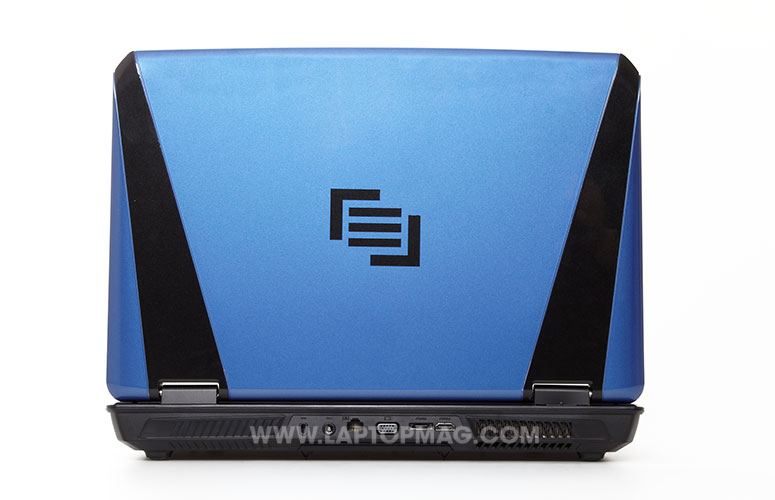
Click to EnlargeWe're constantly inundated with notebooks that are black, white or one of those random shades of gray. So it was refreshing to see the Nomad 17's plastic Vertigo Blue Mica lid. Upon closer inspection, we noticed tiny crystalline flakes spread throughout the lid that made us think of a newly washed and waxed Dodge Challenger. The notebook is also available in Standard Black, Alpine White, Organic Green, Plum Crazy (purple) and Rosso Scuderia (red) at no extra cost.
The black Maingear logo, sandwiched between two shiny black stripes, sits prominently in the center, commanding the viewer's gaze. The strips start at the top of the lid and extend to the bottom, stopping at a pair of thick plastic hinges. While we're not fans of using plastic for hinges, they felt nice and sturdy. Despite the high-gloss finish, the lid was surprisingly resistant to our grope fest.
Thanks to the three types of plastic used on the interior, the Nomad feels scattered. The top of the deck has a glossy black bar where the speakers, touch panel controls and chrome-lined power button reside. The middle of the deck that surounds the keyboard is black matte plastic, but the plastic between the keys is glossy. Finally, the palm rest, which is plastic polymer, but made to look like brushed aluminum, adds yet another element, and looks chintzy. Even more distressing is how quickly the palm rest, the keyboard and the middle deck were easily smudged.
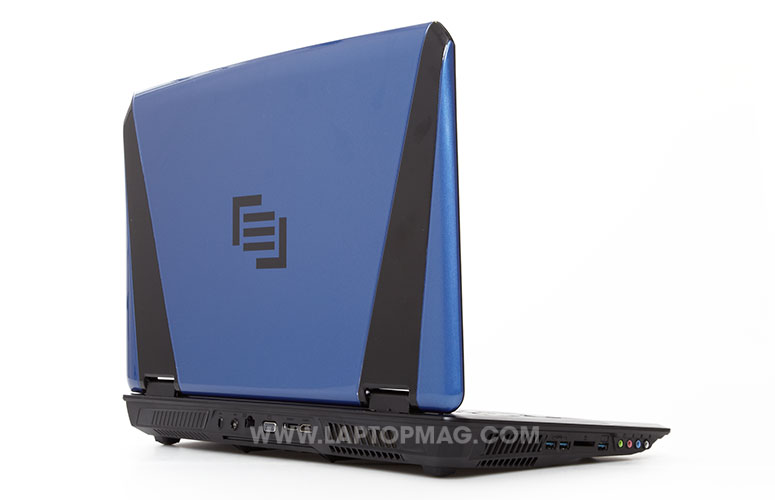
Click to EnlargeThe speakers are lined with clear plastic that glow with a eerie blue light. We wish there was a way to switch out the colors as you can on an Alienware. The black matte touchpad with its thin blue lining made the palm rest feel even more tacked on.
Weighing 8.2 pounds, the 16.9 x 11.4 x 2.1-inch Nomad 17 is on a par with the 8.2-pound, 16.2 x 10.9 x 1.65-1.79-inch Origin Eon 17S. Both are far lighter than the 9.8-pound, 16.1 x 11.9 x 1.75-inch Alienware M17x R4 but not nearly as light the ultra-slim, 6.6 pound, 16.8 x 10.9 x 0.88-inch Razer Blade.
Display
Glossy or matte? Sometimes it just comes down to a matter of preference. Regardless, at 212 lux, the Nomad 17's matte screen isn't very bright. While brighter than the Razer Blade (108 lux), this panel failed to match the 251 lux desktop replacement average, the M17x R4 (282 lux) and the Eon 17S (262 lux).
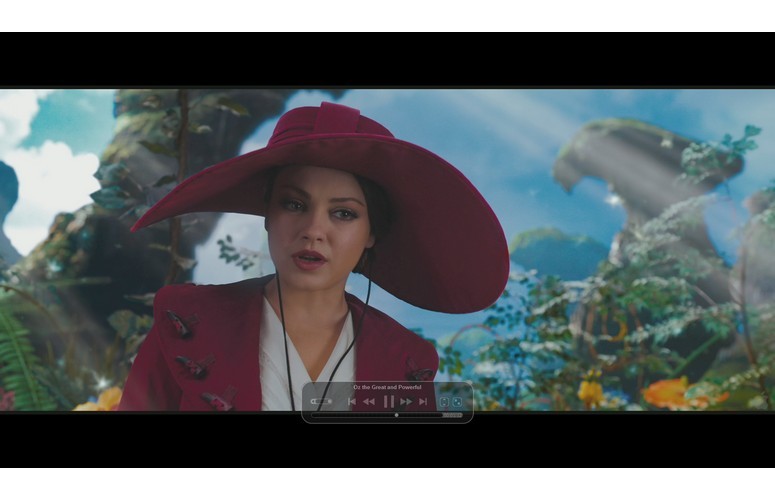
Click to EnlargeText on CNN.com and Polygon.com was nice and crisp on the 1920 x 1080 display. However, colors weren't as vibrant as we've seen on the Alienware M17x R4's glossy 1080p display. When watching the 1080p trailer of "Oz the Great and Powerful" Mila Kunis' crimson red ensemble looked slightly washed out, as did the Emerald City. Generous viewing angles means that three people could comfortably watch the action, however.
War was a ghastly, beautiful thing on "Call of Duty II." We fought our way over an African plain baking under a yellow blistering sun. Our allies' brown khakis were a little faded, as were the rusty red armbands. Explosions from our airstrikes also looked washed out. However, minute details such as a burn victims thick white scars and the fine mist of spray from a speeding boat were nice and clear.
Audio
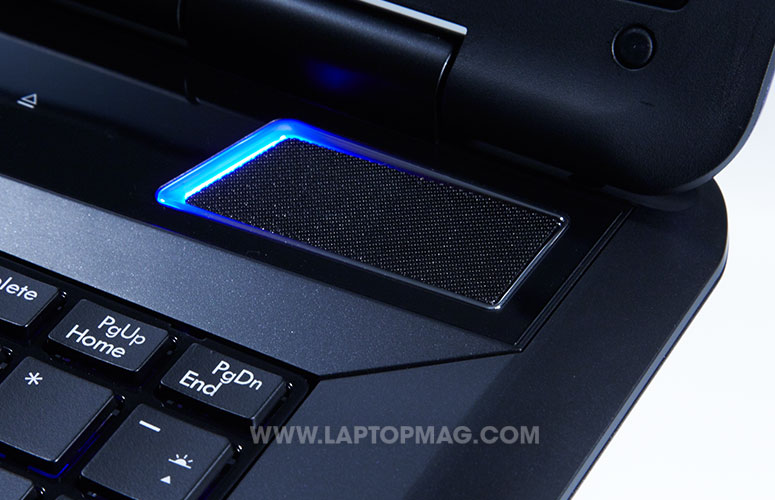
Click to EnlargeThey're a little gaudy, but the pair of DynAudio speakers can easily fill a small room. During the "Oz the Great and Powerful" trailer, the tornado's vicious winds were sprinkled with a soundtrack of breaking glass and shattering wood. The piano-driven track with synthesized instrumentals on Ne-Yo's "Forever Now" sounded a little distant despite tweaking the THX TruStudio Pro software. The crooner's plaintive tenor was rich and full of lovelorn angst. Still, we heard more depth on the M17 R4, including a more pronounced bassline and delicate snaps.
The audio really shone when we ran a few missions in "Call of Duty II." Explosions were deep and booming while the cold metallic click of empty shells was crisp. There was also an almost sickening meaty sound as our machete sank into the throat of a hostile soldier.
Keyboard and Touchpad
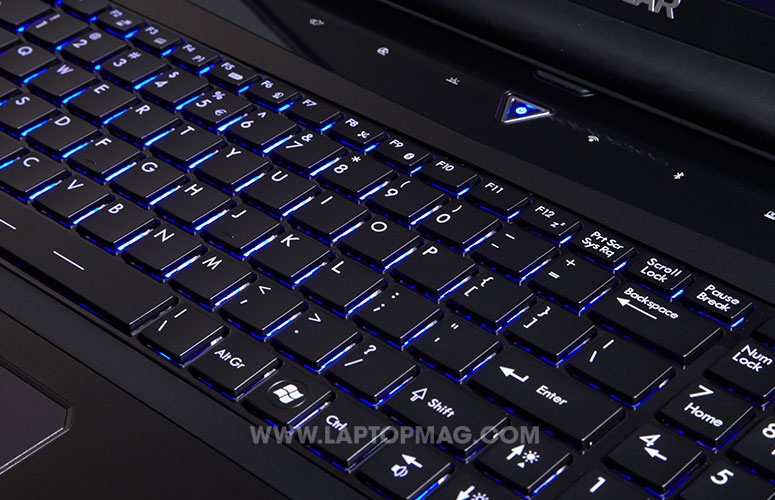
Click to EnlargeThe Nomad 17's island-style keyboard provides some of the best feedback we've experienced from a gaming notebook. The medium-size keys supply a nice amount of travel with good spacing. However, the Backspace, Enter, Right Shift and Right Ctrl keys are all shrunken. The Space bar is also shorter than normal.
Nevertheless, we hammered out 54 wpm with a 1 percent error rate on the Ten Thumbs Typing Test. That's slightly higher than our 50 wpm/1 percent error rate.
Although the keyboard has bright blue backlighting, we're disappointed that the notebook lacks a customizable backlight like the M17x R4 and the Eon 17S, especially at this price. It's a great way to personalize the rig and really make it yours.
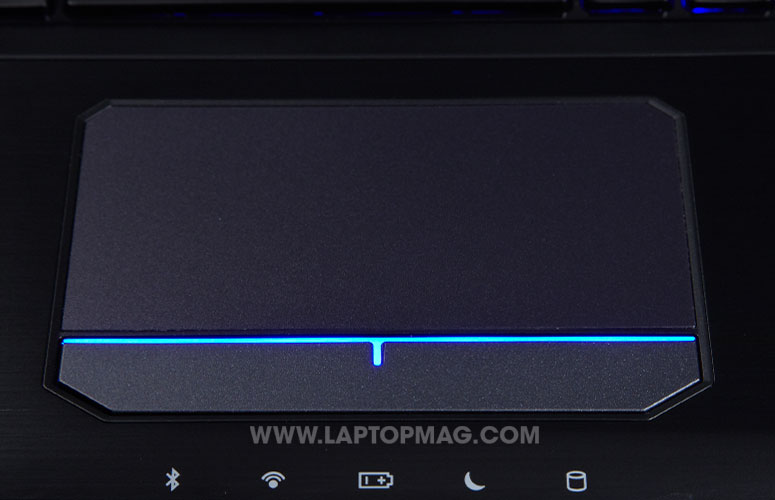
Click to EnlargeThe 4.0 x 2.1-inch touchpad gave us more than enough space to maneuver. Gestures such as pinch-zoom, two-finger scroll and rotate, three-finger press and swipe were nice and fluid, but we had some difficulties highlighting text in documents and Web pages.
Our biggest hangup is the nearly inflexible mouse button panel. The left click side of the panel was really stiff. The right side of the panel was a little looser, but not by much.
Heat
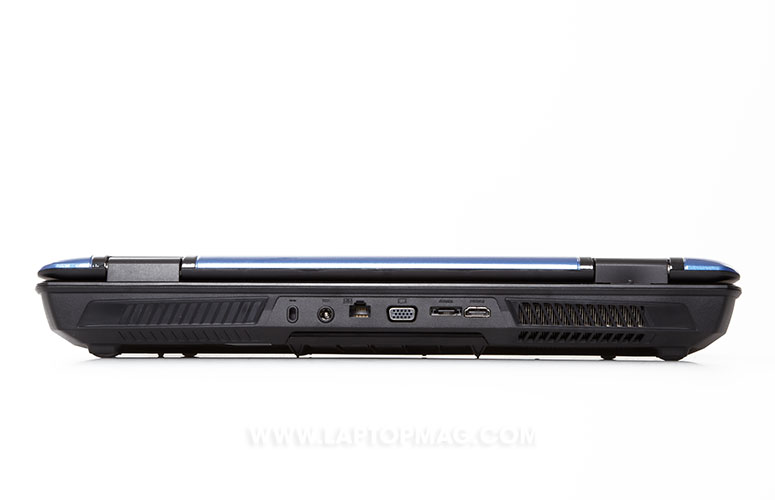
Click to EnlargeAfter watching 15 minutes of "Indie Game: The Movie," on Netflix, the Nomad 17's touchpad measured a cool 78 degrees Fahrenheit. The space between the G and H keys and the underside of the notebook notched 85 degrees.
The touchpad registered 79 degrees after a 15- minute session of "Batman: Arkham City." The space between the G and H keys measured 89 degrees. while the underside posted a warm 97 degrees. However, the lower left corner of the notebook's bottom measured 105 degrees, a full 10 degrees warmer than our 95-degree comfort threshold.
Webcam
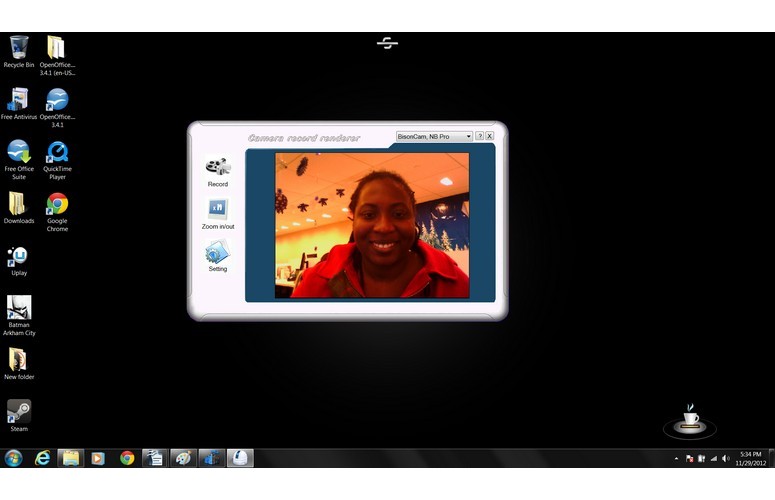
Click to EnlargeThe 2.0 megapixel webcam on the Maingear Nomad 17 captures video in 1280 x 720p. You'll have to find some webcam software because the CameraRecorder software records only video. The video quality left much to be desired. There was a reddish tint throughout the video with a fair amount of noise in natural and fluorescent light settings.
Ports
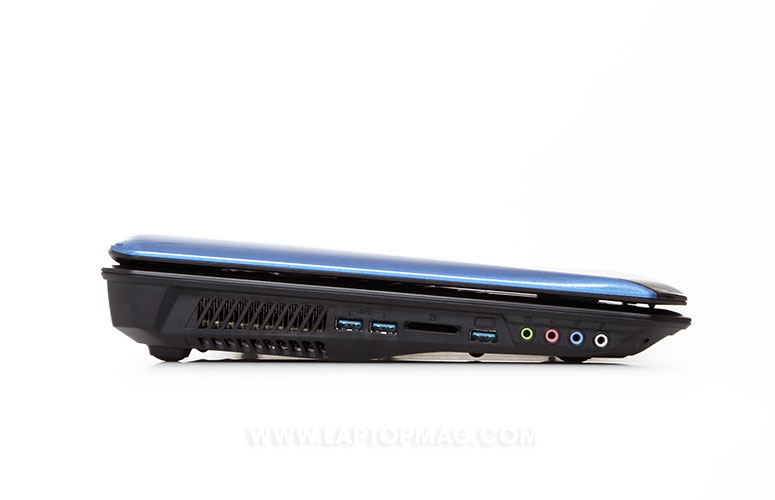
Click to EnlargeThe right side of the Nomad 17 houses a pair of USB 2.0 ports and a DVD burner. A trio of USB 3.0 ports sit on the left with a 9-in-1 card reader, a line-jack and jacks for headphones, a mic and S/PDIF. A combo eSATA port, HDMI, VGA, Gigabit Ethernet port, secure lock slot and power jack sit along the Nomad 17's rear.
Gaming and Graphics
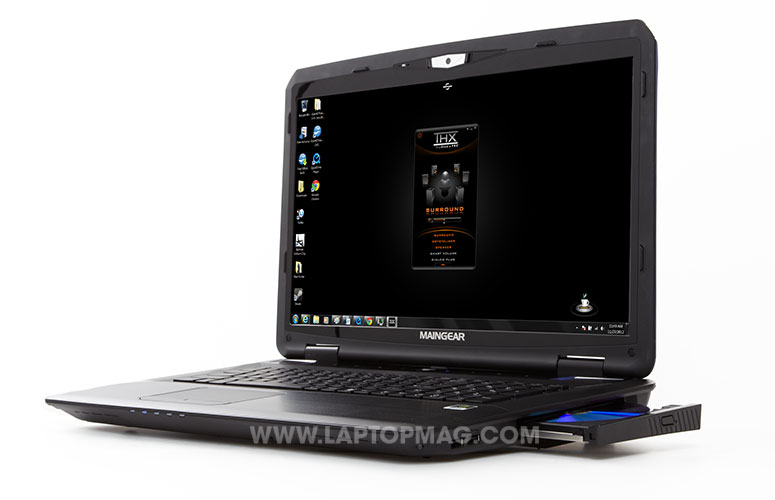
Click to EnlargeThe Maingear Nomad 17 packs some serious heat in the form of its Nvidia GeForce GTX 680M with 4GB of VRAM. For those times we weren't gaming, the Nomad automatically switched to its Intel HD Graphics 4000 GPU, courtesy of Nvidia's Optimus technology.
The notebook delivered solid numbers as we cut a bloody swath in "Call of Duty: Black Ops II," delivering a 60 fps frame rate on 1920 x 1080 (full HD). And this was with High Shadows, Anti-Aliasing set to 8X MSAA and FXAA enabled. Lowering the Anti-Aliasing to 4X MSAA yielded 62 fps while 2X MSAA delivered 65 fps.
On our "World of Warcraft" test, the Nomad 17 gave us a 162 fps frame rate on 1920 x 1080 on autodetect. It wasn't enough to top the 184 category average, but it did surpass the Blade's 104 fps. The M17x R4 and Eon 17S scored 279 and 232 fps, respectively. At maximum settings, the Nomad delivered 101 fps, narrowly beating the 96 fps average. The Blade missed the mark with 51 fps while the Eon 17S scored 129 fps. The M17x R4 maintained a formidable 147 fps lead.
"WOW" is one thing, but when we wanted to test the Nomad 17's graphical chops, we turned to "Batman: Arkham City." Playing with effects on low at native resolution (1920 x 1080), the notebook returned a frame rate of 72 fps. That was enough to top the 68 fps average and the Blade and Eon 17S (38 and 69 fps). However, the M17x R4 continued to lead the pack with 82 fps. When we cranked things up to maximum, the Nomad 17's frame rate dropped to 47, which beat the 38 fps desktop replacement average (38 fps), the Eon 17S (30 fps) and the Blade (24 fps), but was still edged out by the M17x R4 (52 fps).
The Nomad 17 also had a strong showing on synthetic tests, posting 7,405 on 3DMark11. That's more than twice the 3,507 desktop replacement category average. The Alienware M17x R4, which also has a Nvidia GeForce GTX 680M GPU, scored 6,158. The Origin Eon 17 and its Nvidia GeForce GTX 675M CPU notched 3,651, while the Razer Blade delivered 2,636 with its Nvidia GeForce GTX 660M GPU.
Performance
The Maingear Nomad 17 isn't all play, thanks to its 2.8-GHz Intel Core i7-3840QM CPU with 16GB of RAM and dual 128GB mSATA SSDs in RAID 0 configuration. This rig easily streamed "Indie Game: The Movie" despite the 10 open tabs in Google Chrome, Mozilla Firefox and Internet Explorer and a virus scan running in the background.
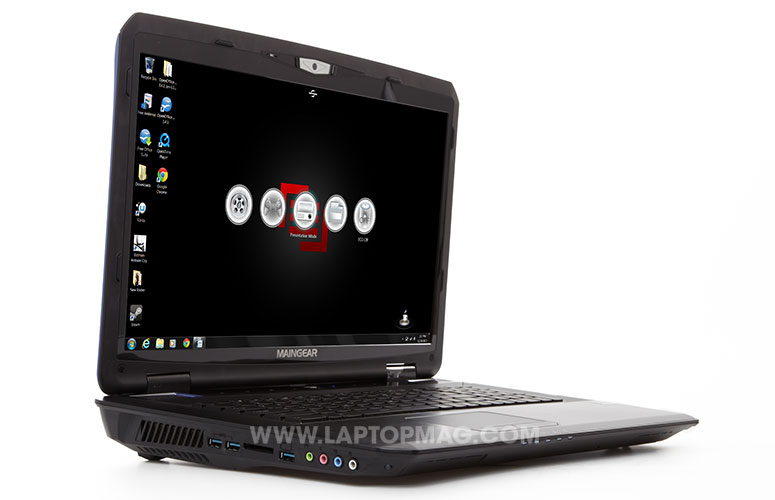
Click to EnlargeThe Nomad 17 performed well during our benchmark testing. It scored 5,489 on PCMark 7, surpassing the 3,757 desktop replacement category average. The Alienware M17x R4 (2.6-GHz Intel Core i7-3720QM) and the Razer Blade (2.2-GHz Intel Core i7-3632QM) scored a lower 4,610 and 4,554, but the Origin Eon 17S and its 2.9-GHz Intel Core i7-3920XM CPU posted 5,602.
During the File Transfer Test, the Nomad 17 duplicated 4.97GB of multimedia files in 17 seconds. That translates into a transfer rate of 299.4 Mbps, shattering the 75 MBps average. The Eon 17S (dual 120 GB SSD and 1TB 7,200-rpm hard drive) clocked in with 254 Mbps while the Blade (500GB 7,200-rpm hard drive and 64GB SSD) notched 86 Mbps. The M17x R4 and its 500GB 7,200-rpm hard drive and 32GB SSD notched an unimpressive 24 Mbps.
The Nomad booted 64-bit Windows 7 Home Premium in 32 seconds, much faster than the 0:51 desktop replacement average. It also beat out the M17x R4's time of 0:34. However, the Blade and the Eon 17S posted much faster times of 0:28 and 0:17 respectively.
On the OpenOffice Spreadsheet Macro Test, the Nomad 17 matched 20,000 names to their corresponding addresses in 3 minutes and 50 seconds. That's 37 seconds faster than the 4:27 average. The Blade clocked in at 4:34, while the M17x R4 finished in 4:10. The Eon 17S delivered a speedy 3:17.
Battery Life
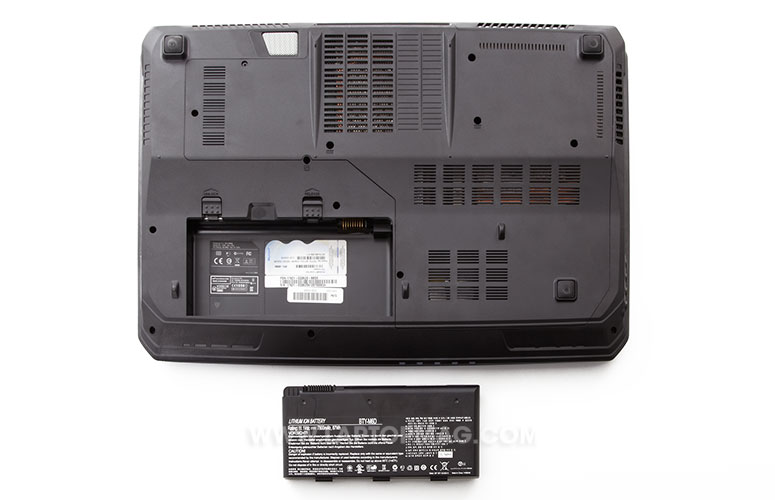
Click to EnlargeDuring the LAPTOP Battery Test (continuous Web surfing over Wi-Fi), the Maingear Nomad 17 lasted 4 hours and 18 minutes. That's 38 minutes longer than the 3:40 desktop replacement category average. The Origin Eon 17S and Razer Blade lasted 2:35 and 3:50, respectively, while the Alienware M17x R4 lasted a whopping 5:27.
Software and Warranty
Click to EnlargeMaingear keeps the bloatware to a minimum, packaging the Nomad 17 with only the bare essentials. Located at the top of the display, the S-Bar utility gave us quick, easy access to important programs, functions and utilities to configure Fn buttons. There's also Eco Mode, which consists of five power profiles (Movie, Game, Presentation, Office and Eco Off) that adjusts screen brightness and output for optimal performance.
The Maingear Nomad 17 comes with one-year comprehensive warranty with lifetime service labor and phone support.
Configurations
Maingear has four configuration tiers for the Nomad 17 (Good, Better, Best and Ultimate) Our $2,599 Ultimate review unit of the Maingear Nomad 17 features a 2.8-GHz Intel Core i7-3840QM CPU with 16GB of RAM, 128GB mSATA SSD in RAID 0 configuration, Intel HD Graphics 4000 GPU and a Nvidia GeForce GTX 680M GPU with 4GB of VRAM. The $1,579 base model (Good) has a 2.9-GHz Intel Core i7-3520M CPU, 8GB of RAM, a 500GB 7,200-rpm hard drive and a Nvidia GeForce GTX 675M CPU with 2GB of VRAM. The Better and Best configurations start at $1,699 and $2,099, respectively. Maingear also has a plethora of configuration choices aimed at creating a truly custom machine.
Verdict
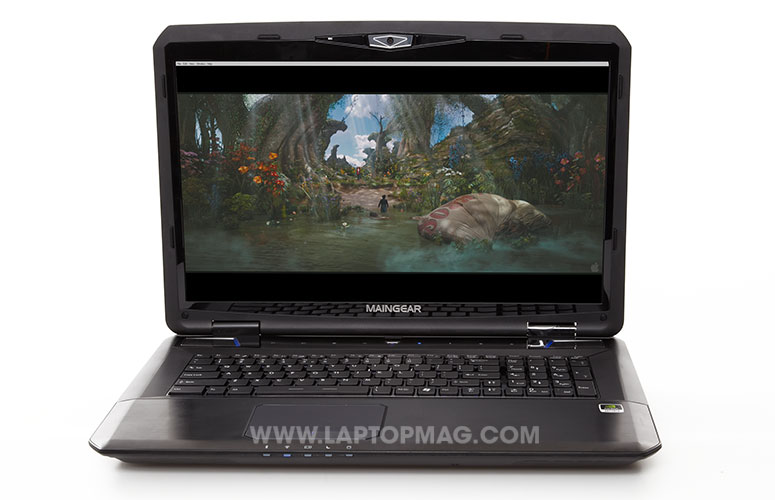
Click to EnlargeFor $2,599, the Maingear Nomad 17 offers gamers a beast of a machine without committing financial hara-kari. A similar configuration for the Alienware M17x would cost $2,974. However, we prefer the look and feel of that machine; notwithstanding the keyboard, the M17x has a better design, a brighter and more colorful screen and more lighting options. Overall, though, the Maingear Nomad 17 is a good choice for those who want a strong dose of power and performance.
Maingear Nomad 17 Specs
| Brand | Maingear |
| CPU | 2.8-GHz Intel Core i7-3840QM |
| Card Slots | 9-1 card reader |
| Company Website | http://www.maingear.com/ |
| Display Size | 17.3 |
| Graphics Card | Intel HD Graphics 4000/ Nvidia GeForce GTX 680M |
| Hard Drive Size | Dual 128 GB mSATA SSD |
| Hard Drive Speed | n/a |
| Hard Drive Type | Dual mSATA SSD |
| Native Resolution | 1920x1080 |
| Operating System | MS Windows 7 Home Premium (64-bit) |
| Optical Drive | CD Burner/DVD Combo Drive |
| Optical Drive Speed | 8X |
| Ports (excluding USB) | Line-in, Headphone, VGA, HDMI, USB/eSATA, Gigabit Ethernet, USB 3.0, S/PDIF, Microphone |
| RAM | 16GB |
| RAM Upgradable to | 32GB |
| Size | 16.86 x 11.35 x 2.1 inches |
| Touchpad Size | 4.0 x 2.1 inches |
| USB Ports | 6 |
| Video Memory | 4GB |
| Warranty/Support | Lifetime Angelic Service Labor and Phone Support with 1 Year Comprehensive Warranty |
| Weight | 8.2 pounds |
| Wi-Fi | 802.11n |
| Wi-Fi Model | Intel Centrino N2200 |

Sherri L. Smith has been cranking out product reviews for Laptopmag.com since 2011. In that time, she's reviewed more than her share of laptops, tablets, smartphones and everything in between. The resident gamer and audio junkie, Sherri was previously a managing editor for Black Web 2.0 and contributed to BET.Com and Popgadget.
